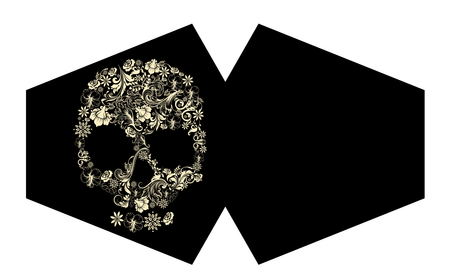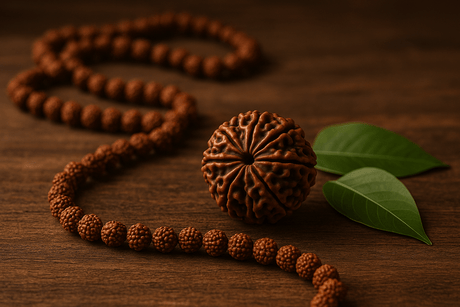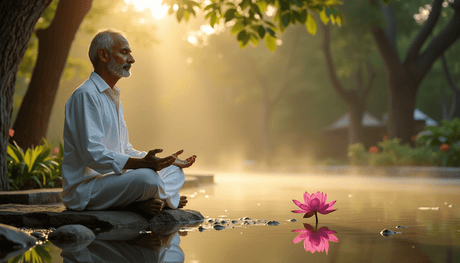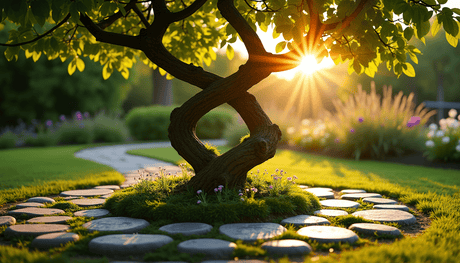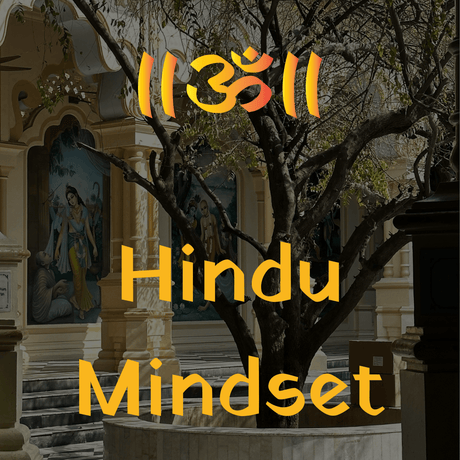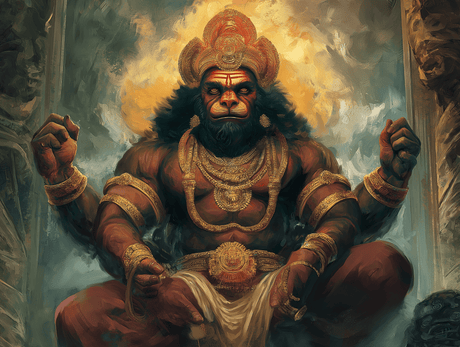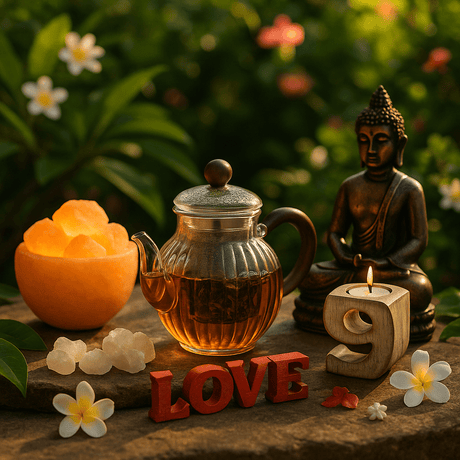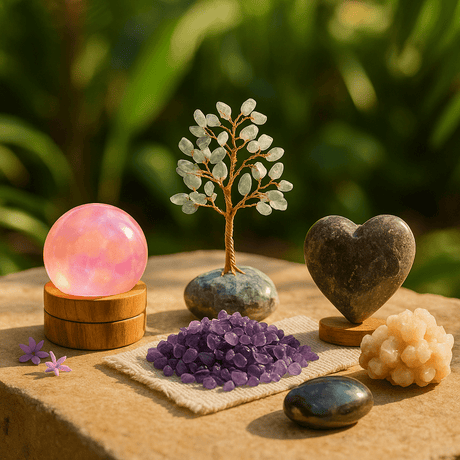Meditation on Death in Buddhism
In Buddhism, meditation on death is a significant practice, serving as a reminder of the impermanence of life and the inevitability of death. This form of meditation, known in Pali as "Maranasati" is intended to deepen the understanding of the transient nature of existence and to cultivate a sense of urgency for spiritual practice.
By regularly contemplating death, Buddhists aim to overcome the fear and denial often associated with it, leading to a greater appreciation of each moment of life. This practice involves reflecting on the certainty of death, the uncertainty of the time of death, and the impermanence of the body. It encourages practitioners to live ethically, make wise choices, and develop compassion and mindfulness.
The Buddha taught that awareness of death is crucial for breaking the cycle of desire and attachment, which are root causes of suffering. Maranasati is not seen as a morbid practice but rather as a tool for liberation – by acknowledging the inevitability of death, one can live a more purposeful, meaningful, and detached life, ultimately leading towards enlightenment and liberation from the cycle of rebirth (Samsara). This meditation on death thus serves as a powerful motivator for spiritual growth and personal transformation within the Buddhist tradition.

Shamanic Death-and-Rebirth Rituals
Shamanic death-and-rebirth rituals, deeply rooted in indigenous cultures worldwide, are intricate practices that facilitate profound personal transformation. These rituals, often central to a shaman's work, symbolize the dying of the old self and the birth of a new, spiritually awakened self. A classic example can be found in the vision quest rituals practiced by various Native American tribes. Typically involving a period of isolation in nature, such as a mountain or other sacred site, the vision quest includes fasting and prayer, and it often lasts for several days. The seeker, removed from the distractions of communal life, undergoes a symbolic death of their former identity, confronting deep fears, challenges, and often experiencing visionary or dream-like states.
In Siberian and Eurasian shamanism, the shaman undergoes a symbolic death and rebirth during their initiation. This transformative process is often described in their mythology as being torn apart by spirits and then reassembled, symbolizing the shaman's ability to traverse both the physical and spiritual worlds. This intense experience is believed to grant the shaman healing powers and profound insights.
In South American shamanic traditions, rituals involving Ayahuasca, a psychoactive brew, are used for similar purposes. Participants in these ceremonies often report experiencing symbolic death and rebirth, leading to emotional and psychological healing. Guided by a shaman, the Ayahuasca experience is intended to cleanse the body and mind, offering insights into personal issues and the nature of the universe.
Another example is the Tibetan Buddhist practice of Chöd, influenced by shamanic traditions. Practitioners use music, visualization, and chant to metaphorically offer their bodies to demons and spirits. This practice symbolizes the sacrifice of ego and attachment, leading to liberation from suffering.
These rituals, varying in form but similar in essence, use the metaphor of death and rebirth to initiate profound changes in the participant's consciousness. By confronting and symbolizing the end of one's old self, these practices allow for psychological rebirth, often leading to greater spiritual awareness, emotional healing, and a deeper connection with the natural and spiritual worlds.

The Dance of Death (Danse Macabre)
The Dance of Death, or "Danse Macabre," is a medieval allegorical concept that emerged in Europe during the late Middle Ages, profoundly influenced by the widespread devastation caused by the Black Death and the realities of war and famine. This artistic and literary motif typically portrays death, personified as a skeleton or a decaying corpse, leading people from all walks of life in a final dance towards the grave. Nobles, clergy, peasants, and merchants alike are depicted in this dance, symbolizing that death is the great equalizer, sparing no one regardless of their social status or wealth.
This representation served as a memento mori, a reminder of the inevitability of death and the vanity of earthly pleasures and achievements. Often found in the form of paintings, murals, and later in woodcuts and printed books, the Danse Macabre visually and vividly communicated the medieval concept of the universality and impartiality of death. It was a didactic tool, urging people to prepare for death by leading virtuous lives, reinforcing the contemporary belief in the fleeting and unpredictable nature of earthly existence.
The Dance of Death remains an enduring symbol of the human condition, reflecting a deep-seated cultural awareness of mortality and the transient nature of life.

Freemasonry Symbolism
In Freemasonry, death is symbolized and contemplated not as a morbid or fearful concept, but as a profound allegory for moral and spiritual transformation. One of the most significant embodiments of this theme is found in the Master Mason degree, the third degree of Blue Lodge Freemasonry, which features the allegorical drama of Hiram Abiff. In this narrative, Hiram Abiff, the architect of King Solomon's Temple, is attacked and killed, symbolizing the inevitability of death and the integrity of keeping one's word even in the face of mortal danger. This story is a cornerstone of Masonic teaching, interpreted as a lesson in fidelity, integrity, and the eventual triumph of the spiritual over the physical.
Additionally, Masonic iconography often includes symbols like the skull and crossbones, the scythe, and the hourglass, serving as memento mori, reminders of the inevitability of death and the passage of time. These symbols encourage members to reflect on the transience of life and the importance of living with virtue and purpose. The sprig of acacia, another recurrent Masonic symbol, represents the immortality of the soul and the eternal life that transcends physical death.
Furthermore, some Masonic rituals, such as those in the Chamber of Reflection, involve a period of solitary contemplation where candidates are encouraged to meditate on their mortality, the meaning of life, and their personal and moral values. Masonic funeral rites and services, held for deceased members, also reflect the fraternity's views on death - honoring the memory of the departed while reminding the living of their own mortality.
Overall, Freemasonry uses the symbolism of death to impart moral lessons, to encourage a deeper appreciation of life and its fleeting nature, and to inspire its members to lead lives of integrity, with an awareness of their actions' lasting impact.

Memento Mori
"Memento Mori," a Latin phrase meaning "remember that you must die," is a symbolic reminder of the inevitability of death that has been a significant component of philosophical, spiritual, and cultural expressions through the ages.
Originating from ancient Roman traditions, where a slave would remind a victorious general of his mortality during a triumphal parade, the concept was adopted and profoundly embedded in Christian thought during the medieval period. Memento Mori serves as a humbling reminder of the transient nature of human life, urging individuals to reflect on the certainty of death and the importance of living a life of meaning and virtue. In art and literature, Memento Mori has been depicted through various symbols such as skulls, hourglasses, and wilting flowers, representing the passage of time and the inevitability of decay.
The practice of reflecting on one's mortality has been seen as a means to foster spiritual mindfulness, ethical living, and detachment from the materialistic and ephemeral pleasures of the world. It reminds people to cherish each moment and to focus on what truly matters, such as personal growth, kindness, and preparation for the afterlife in some religious contexts.
Memento Mori, therefore, is not just a morbid reminder of death but a poignant and pragmatic prompt to embrace life fully with awareness and purpose.

The Zen Buddhist Koan
In the context of death and spiritual practice, Zen Buddhist Koans serve as a profound tool for contemplating the nature of life and death, transcending ordinary understanding. Koans like “What is your original face before your mother and father were born?” directly challenge the practitioner to consider their existence beyond physical birth and death. This introspective process is not just an intellectual exercise but a deep meditation on the impermanence and interdependence of all life. By grappling with such paradoxical questions, Zen practitioners are led to confront the reality of death and the limitations of their conceptual understanding of it.
The purpose of engaging with koans in this context is to break through the dualistic thinking that separates life and death, self and other, leading to a direct experience of the true nature of reality, which transcends these dichotomies. This realization, often described as an awakening or enlightenment, can bring about a profound inner transformation. The practitioner gains a deeper acceptance of the impermanence of life and a greater appreciation for the present moment, free from the usual fears and attachments associated with death.
In this way, Zen Koans serve as a bridge to understanding death not as an end but as an integral part of the continuum of existence. They encourage a shift in perspective, where death is seen not as a finality but as a natural and essential aspect of life, leading to a more harmonious and enlightened approach to living and dying.

Sufi Poetry and Music
In the context of death and the spiritual journey, Sufi poetry and music often encapsulate profound reflections on mortality, the ephemeral nature of the physical world, and the soul's longing for union with the divine.
Sufi poets like Rumi, Hafiz, and Omar Khayyam used metaphors of death to symbolize the annihilation of the ego and the soul's liberation from the illusions of worldly existence. Their poetry frequently explores themes of love, loss, and the transformative journey of the soul, where physical death becomes a metaphor for spiritual awakening and the dissolution of the self in the divine essence.
Sufi music, with its deeply meditative and trance-inducing qualities, complements this poetic imagery. Through the use of traditional instruments, rhythm, and qawwali (devotional singing), Sufi music seeks to elevate the listener to a state of spiritual ecstasy, transcending the boundaries of the material world. This ecstatic experience, often described as 'fana' (annihilation) in Sufism, is akin to a symbolic death, where the devotee's individual identity dissolves in the experience of the divine presence. Thus, in Sufi practice, the contemplation of death through poetry and music is not seen as morbid or fearful, but rather as a pathway to spiritual enlightenment, a deeper understanding of the divine, and ultimately, a celebration of the eternal nature of the soul.

Christian Lent
In the context of death and spiritual practice, Christian Lent serves as a profound period of reflection on mortality and the transience of life, deeply rooted in the themes of sacrifice and redemption. It begins with Ash Wednesday, where the imposition of ashes symbolizes the dust from which humanity was created and to which it will return, echoing the inevitability of death. This solemn reminder sets the tone for Lent, a time when Christians are called to contemplate the sacrificial death of Jesus Christ on the cross, an event that holds deep significance in Christian theology as a pathway to salvation and eternal life.
The practices of fasting, abstinence, and penitence during Lent are not merely acts of self-denial but are deeply symbolic of a spiritual 'dying to self.' This concept involves a letting go of worldly attachments, ego, and sin, akin to a metaphorical death that paves the way for spiritual rebirth and renewal. The journey through Lent mirrors the journey of life towards death, underscoring the importance of living in a way that is spiritually prepared for the finality of death.
Furthermore, Lent culminates in Holy Week, which includes Good Friday, the day commemorating the crucifixion of Jesus. This culmination is a poignant reminder of the suffering and mortality that are intrinsic parts of the human experience. Yet, it also leads to Easter Sunday, symbolizing hope and the belief in resurrection and life after death. In this way, Lent embodies a dual meditation on both the finality of death and the Christian hope of eternal life, encouraging believers to live lives of meaning, purpose, and spiritual readiness for the eventual transition from earthly life.

The Day of the Dead (Día de los Muertos)
The Day of the Dead, or "Día de los Muertos," is a vibrant and culturally rich Mexican holiday celebrated on November 1st and 2nd, coinciding with the Catholic All Saints' Day and All Souls' Day. Rooted in a blend of Mesoamerican rituals and European influences, this celebration honors and remembers deceased loved ones, not through mourning but through festivity and joy.
During these days, it is believed that the spirits of the departed return to visit the living. Families create colorful altars ("ofrendas") in their homes and at cemeteries, decorated with marigold flowers, candles, photos of the deceased, and offerings of their favorite foods and drinks. Traditional elements include sugar skulls ("calaveras"), which are often whimsically decorated and bear the name of the departed, and "pan de muerto," a special bread. The atmosphere is one of remembrance, love, and respect, but also of celebration, reflecting a cultural perspective that views death as a natural part of life's continuum.
The Day of the Dead is a time for communal gathering, storytelling, and the celebration of life, illustrating a unique and deeply spiritual approach to death, where it is embraced as part of the human experience, intertwined with love, memory, and family. This holiday is not only a time to remember those who have passed but also to reflect on one's own life and the ties that bind the past, present, and future generations.

Egyptian Book of the Dead
The Egyptian Book of the Dead is a crucial component of ancient Egyptian spiritual practices concerning death. This collection of spells and rituals was intended to guide the deceased through the underworld and assist them in overcoming the challenges of the afterlife. It embodies the Egyptians' view of death as a transitional phase rather than an end, emphasizing the journey of the soul and its eternal nature. The text includes instructions for navigating the underworld, ensuring the deceased's well-being in the afterlife, and maintaining a connection with the world of the living. Central to these practices was the belief in living a life aligned with Maat – the principles of truth, balance, and justice – which was thought to impact the soul's journey in the afterlife.
The Book of the Dead, therefore, reflects the sophisticated spiritual understanding of the ancient Egyptians and their meticulous approach to preparing for life after death.

The Christian Practice of Ash Wednesday
Ash Wednesday marks the beginning of Lent in the Christian liturgical calendar, a period of 40 days leading up to Easter that is observed by many Christian denominations. This day is characterized by the imposition of ashes on the foreheads of believers, often in the shape of a cross.
The ashes, traditionally made by burning the palm fronds distributed on the previous year's Palm Sunday, serve as a poignant reminder of human mortality and the repentance of sins. The minister or priest applies the ashes while reciting the words, "Remember that you are dust, and to dust you shall return," or a similar phrase, echoing God's words to Adam in the Book of Genesis. This ritual is a powerful, symbolic gesture that calls Christians to reflect on their mortality, the transient nature of human life, and the need for repentance and spiritual renewal.
Ash Wednesday initiates a season of introspection, fasting, and penitence, encouraging believers to reorient their lives towards God and prepare themselves for the commemoration of Jesus Christ's death and resurrection at Easter. It underscores the Christian belief in the redemptive power of Christ's sacrifice and the hope of resurrection, even in the face of the inevitability of death.

The Stoic Practice of Negative Visualization
The Stoic practice of negative visualization, known as "premeditatio malorum," is a philosophical exercise that involves contemplating and mentally preparing for adverse events, including death.
Originating from the Stoic philosophers of ancient Greece and Rome, such as Seneca, Epictetus, and Marcus Aurelius, this practice encourages individuals to regularly visualize potential misfortunes, including the loss of possessions, suffering, and the inevitability of death. The purpose is not to induce fear or pessimism, but rather to cultivate a state of emotional and mental resilience. By contemplating the worst-case scenarios, Stoics aim to lessen the impact of these events should they actually occur and to appreciate the present moment more deeply. This mental rehearsal helps to foster a sense of gratitude for what one currently has and builds strength to face life's challenges with equanimity.
Negative visualization serves as a reminder of life's impermanence and the importance of living virtuously and mindfully in the here and now, aligning well with the Stoic belief in focusing on what is within one's control and accepting what is not.

Vajrayana Buddhist Practices
Vajrayana Buddhism, known for its intricate rituals and esoteric practices, offers a unique perspective on death and the process of dying. A central theme in Vajrayana is the preparation for and understanding of death as a profound opportunity for spiritual liberation. One of the most renowned texts in this tradition is the Tibetan Book of the Dead, or "Bardo Thodol," which serves as a guide for the dying and is intended to be read to them as they transition through death. This text describes the bardo, an intermediate state between death and rebirth, offering detailed instructions on how to navigate this experience to achieve a favorable rebirth or enlightenment.
Another significant practice is Phowa, the conscious directing of one's spirit at the moment of death to a pure land or a higher state of being. This advanced technique is thought to bypass the uncertainties of the bardo and lead directly to liberation or a better rebirth. Additionally, the concept of 'tulku' or conscious rebirth is a distinct aspect of Vajrayana, where accomplished practitioners are believed to control their rebirth for the benefit of all beings.
Vajrayana also incorporates practices like Chöd, which involves meditative visualizations of offering one's body to demonic forces as an act of compassion and a way to cut through ego attachment. This practice serves as a powerful contemplation on the impermanence of the body and the illusion of the self.
Overall, Vajrayana Buddhism views death not as an end, but as a crucial phase of a continuing journey, offering profound practices for understanding and navigating this transition with awareness and compassion. These practices are deeply rooted in the tradition's rich philosophical and mystical teachings, aiming to transform the experience of death from one of fear and uncertainty to an opportunity for spiritual awakening and liberation.

Hindu Cremation Rites (Antyeshti)
Hindu cremation rites, known as Antyeshti or Antim Sanskar, form a crucial part of the spiritual practices surrounding death in Hinduism. These rites are centered on the belief in the soul's immortality and the concept of reincarnation.
The process of cremation is seen not just as a method of disposing of the body, but as a crucial ritual to release the soul from the physical confines of the body, enabling it to proceed to its next incarnation.
The ceremony usually takes place on a riverbank, symbolizing the return of the elements to their source, and is conducted amidst chanting of Vedic mantras. The body is placed on a pyre and the eldest son or a close relative typically performs the ritual of igniting the fire, symbolizing the element of Agni (fire) which is believed to purify and lead the soul towards liberation, or Moksha.
After the cremation, the ashes are collected and often immersed in a holy river, preferably the Ganges, signifying the soul's return to the cosmic elements and its liberation from the cycle of birth and death (Samsara). This process reflects a deep acceptance of the impermanence of physical life and a profound spiritual approach to death, emphasizing the soul's eternal journey.

Tibetan Sky Burials
Tibetan Sky Burials, or "Jhator" are a unique funerary practice in Tibetan Buddhism, reflecting a profound understanding of life, death, and the impermanence of the physical body. In this ritual, the deceased's body is offered to vultures, based on the belief that after death, the soul leaves the body, and thus the body becomes an empty vessel.
This practice aligns with the Buddhist teaching of the transience of physical existence and the importance of compassion. The sky burial is seen as an act of generosity and a final gesture of giving, as the body nourishes other living beings. Conducted at specific, elevated locations known as charnel grounds, the body is prepared by a burial master, often dismembered to facilitate consumption by the birds. The process is viewed as a direct reminder of the Buddhist teachings on the impermanence of life and the cycle of rebirth.
For the Tibetans, sky burials represent a practical application of their spiritual beliefs, emphasizing the interdependence of all life forms and the cyclical nature of existence. This practice, deeply embedded in Tibetan culture, offers a stark contrast to Western funerary customs, reflecting a unique perspective on death and the afterlife.
























